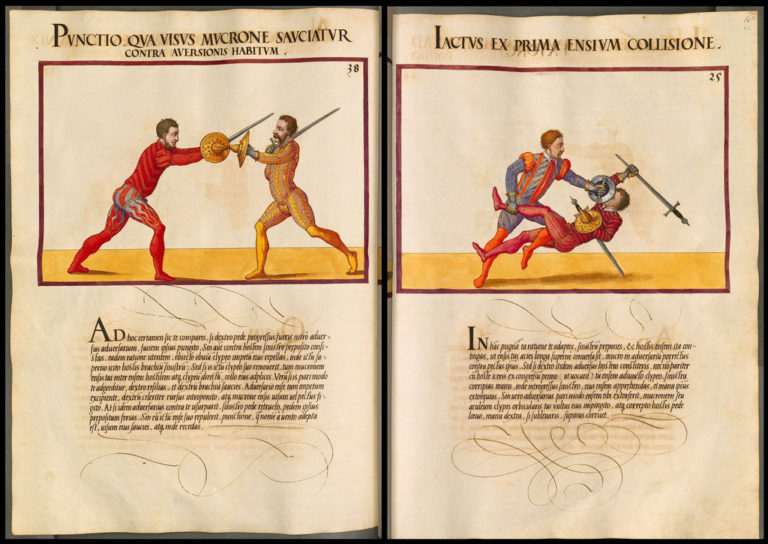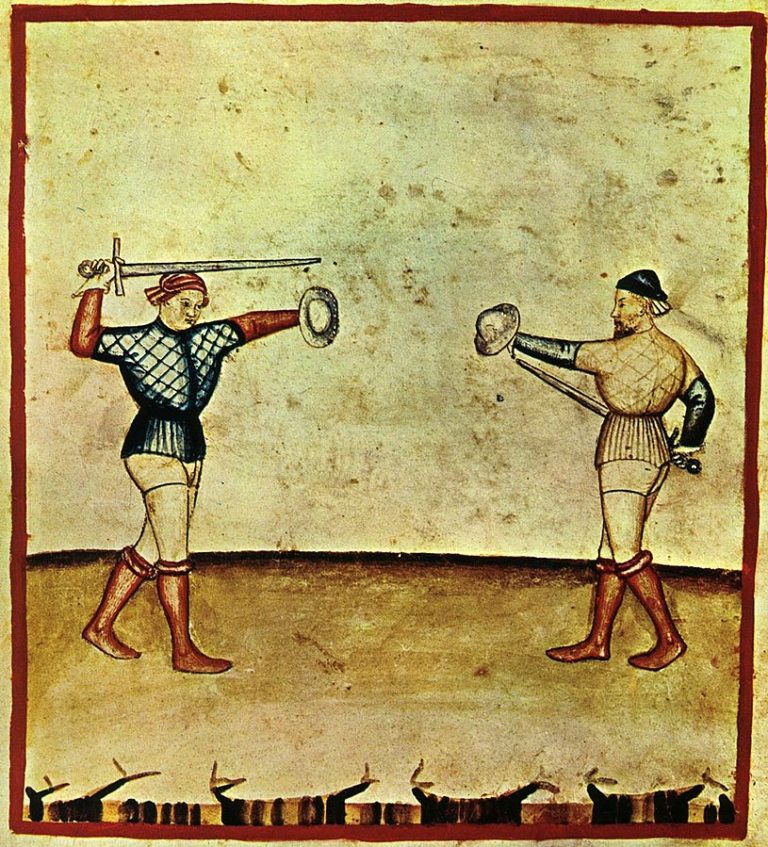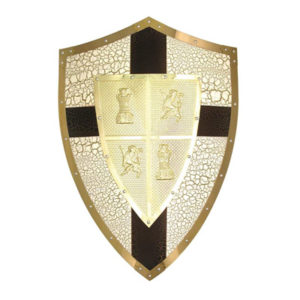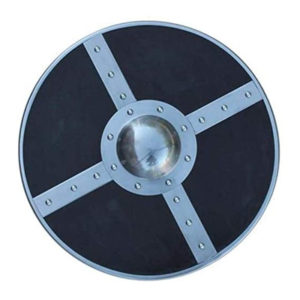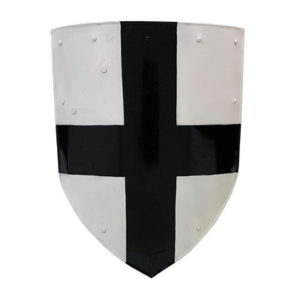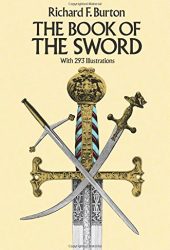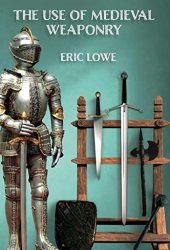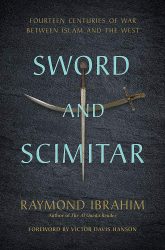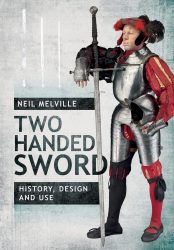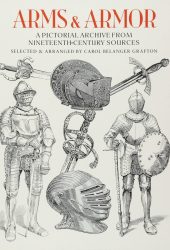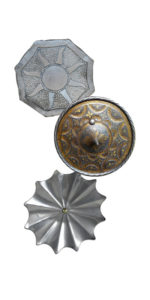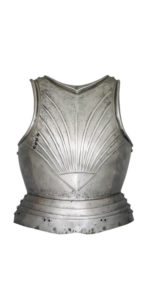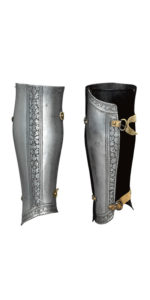Shields have been used consistently throughout the Middle Ages. From bucklers to pavise shields, they were made in different shapes, sizes, thickness, and materials, with or without straps for the wrist and forearm.
They provide passive protection by closing one or more engagement lines during combat; they are used to intercept attacks from close-ranged weaponry and projectiles such as arrows and bolts.
Shields were normally made of wood, animal hide, woven reeds, poplar tree, lime, or another split-resistant timber, and were frequently covered with leather or rawhide and often reinforced with a metal boss, rim, or banding.
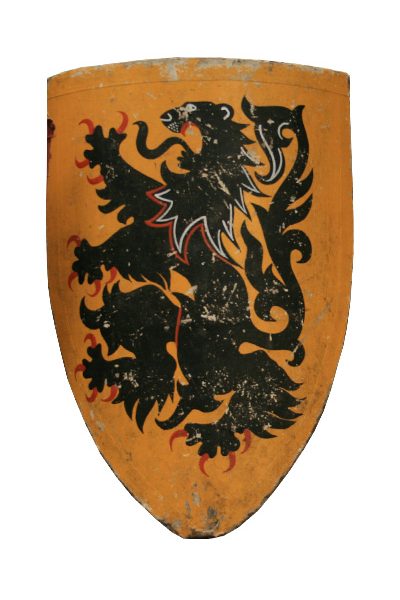
History of the Shield
Shields were used from prehistory to protect against attacks by swords, axes and maces, sling-stones, or arrows. Historically, sizes and weights have varied greatly.
Lightly armored warriors would generally carry light shields, either small or thin, while heavy troops might rely on robust shields that covered most of the body. The Mycenaean Greeks, for example, used two types of shields: the “figure-of-eight” shield and a rectangular “tower” shield. On the other hand, the Ancient Greek hoplites used a round, bowl-shaped wooden shield that was reinforced with bronze. The heavily armored Roman legionaries used large shields to create a tortoise-like formation, great for protection against missiles but not ideas for swift movement.
In the early European Middle Ages, round shields made with light wood and reinforced with leather were designed for intercepting incoming blows to deflect them. The Normans introduced the kite shield around the 10th century, giving protection to the user’s legs. These replaced in the 14th century by smaller heater shields, such as bouches and pavises, and eventually abandoned in battle, favoring mobility and two-handed weapons.
Types of Shields
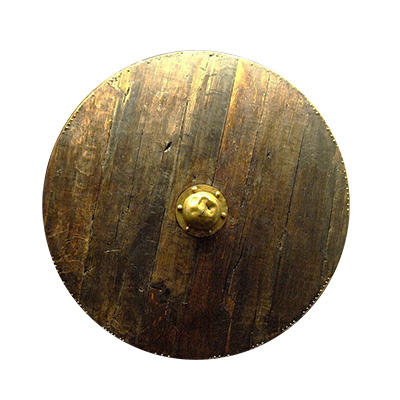

Round Shield
Archaeological finds show that round shields were usually made from linden wood, fir, alder, and poplar with steel or iron shield boss (materials that are light in hand, not too dense, and not inclined to split). Most shields are shown in illuminations as painted a single color, although some have a design painted onto them, such as crosses or sun wheels.
During the Bronze Age, round shields were generally large and designed for bashing and shield wall tactics.
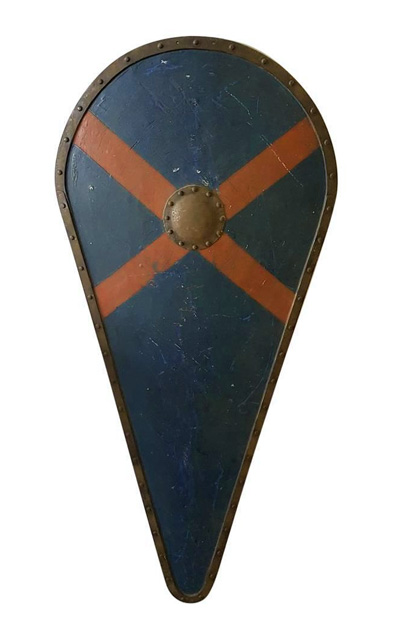

Kite Shield
It’s believed that kite shields were introduced in Britain by the Normans after being developed for mounted cavalry (a narrow bottom protected the rider’s left leg, and the pronounced upper curve, the rider’s shoulder, and torso). In the Bayeux Tapestry, most of the English are depicted on foot with kite shields.
Around the mid to late twelfth century, traditional kite shields became replaced by a variant in which the top was flat rather than rounded, making it easier for a soldier to hold the shield upright without limiting his field of vision.
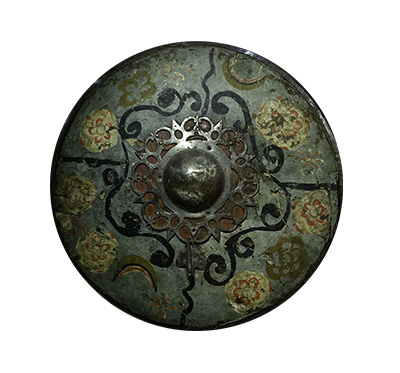

Buckler Shield
The Buckler was a small (up to 45 cm or 18 in) round, metal shield gripped in the fist with a central handle behind the boss and could be hung from a belt.
This type of shield was reserved as a companion weapon in hand-to-hand combat during the Medieval and Renaissance periods. While it offered poor protection against missile weapons, it was useful in deflecting an opponent’s blows. The buckler was often combined with an arming sword, falchion, or rapier.



Heater Shield
Heater shields developed in the late 12th century. Although they evolved from kite shields, they were more manageable and used either mounted or on foot. As plate armor began to cover more and more of the body, the shield grew correspondingly smaller. Relatively lightweight compared to other similar shields, the heather shield was easy to move around during both mounted and on-foot combat.
Because they were relatively inexpensive and easy to make, they were used by almost every social class.
Heater shields often featured a strap or guige for the shield to be slung over the back when not in use. Jousting shields from the 15th century containing a bouche or “mouth” for the lance to pass through.
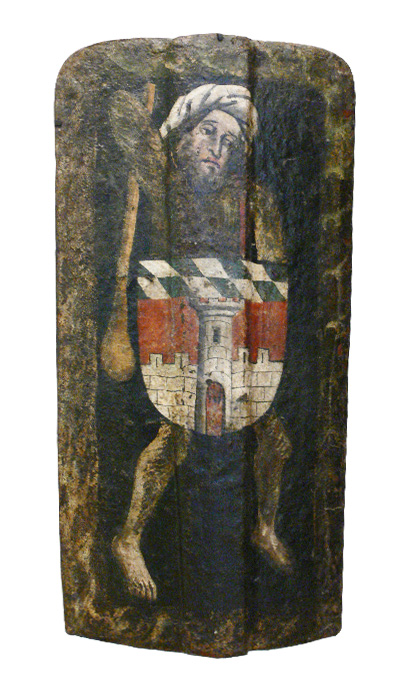

Pavise Shield
The Pavise was a large, square, and convex shield used during the late 14th to early 16th centuries by archers, crossbowmen, and infantry soldiers. It was usually large enough to cover the entire body. While reloading their weapons, archers and crossbowmen would crouch behind them to shelter against incoming missile attacks.
During a siege, the pavise was often carried by a specialist pavise-bearer, who held it in place or deployed it in the ground with a spike attached to the bottom.
Pavises were often painted with the coat of arms of the town where they were made
Using Shields
The use of the shield had to be trained just as much as the use of weapons. A popular device for doing so was the pell, a wooden stake driven into the ground.
When the shield developed into an attacking weapon too, this aspect had to also be added to practice when at the Pell.

